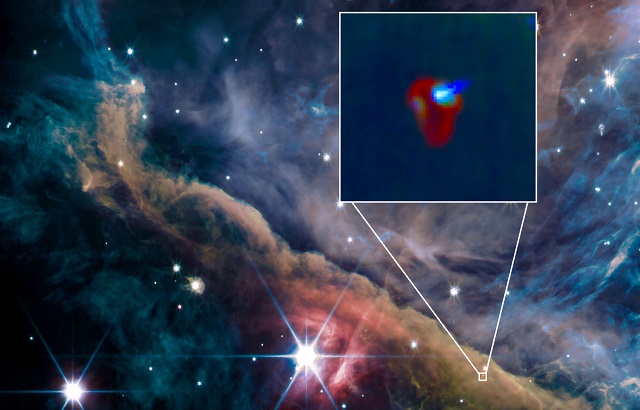Radiation from massive stars shapes planetary systems
Astronomy unit members are part of a team that has discovered a unique planetary system where a young star is being stripped bare of its planet-forming material at an astonishing rate

JWST image of the Orion Nebula and zoom with on the proto-planetary system d203-506. Credits: background image NASA/ESA/CSA/S. Fuenmayor/PDRs4All Zoom in: I. Schroetter/O. Berné/PDRs4All
This unprecedented observation, published in the Science and featured on its cover, provides a crucial clue to understanding the diverse and puzzling worlds beyond our solar system.
For decades, astronomers have known that the powerful light emitted by massive stars can disrupt the swirling disk of dust and gas around young stars, the very cradle from which planets are born. But a crucial question remained unanswered: how quickly does this process occur, and does it leave enough material to form planets?
This new research, led by Dr. Oliver Berné at CNRS, France, and involving Dr. Thomas Haworth from Queen Mary University of London, offers an answer. Utilising the powerful James Webb Space Telescope, they studied a stellar nursery, the Orion Nebula, specifically a protoplanetary disc named d203-506, where the planet-forming material, normally confined to a tiny region, has been blown up to an unusually large size. This allowed them to measure the rate of material loss with unprecedented accuracy.
See here for the full story.